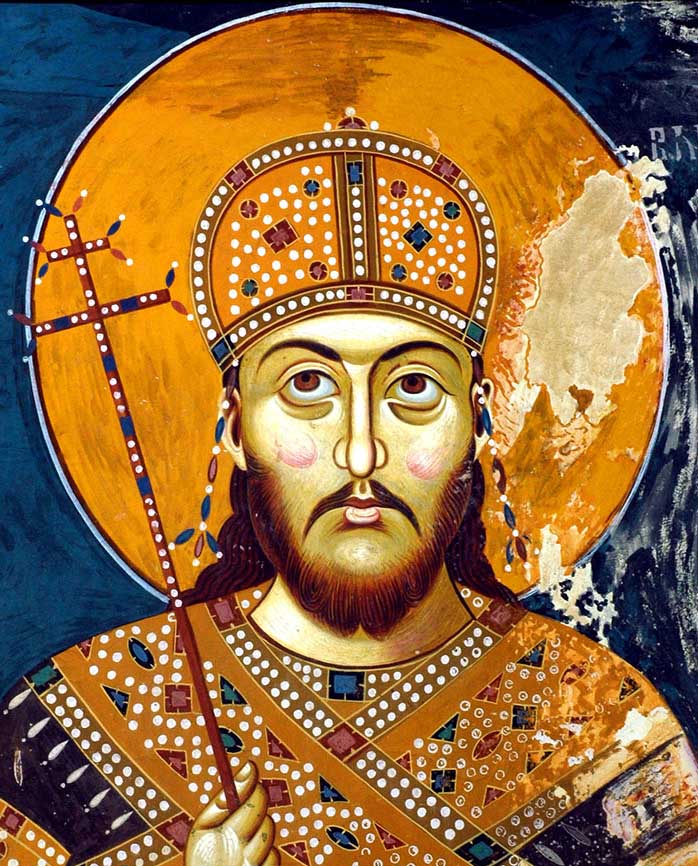|
Monastery Of St. Mark Of Koriša
The Monastery of St. Mark of Koriša ( sr, Манастир Свети Марко Коришки, Manastir Sveti Marko Koriški; al, Manastiri i Markut të Shenjtë, Korishë) was a Serbian Orthodox monastery built in 1467, located in Koriša, Prizren, Kosovo. The entire complex was declared a Protected Monument of Culture in 1959, and it is ''de jure'' protected by Republic of Serbia. It was a single-nave church, built on a rectangular foundation. It was severely damaged after the end of the Kosovo War in 1999. History The ruins of the monastery of St. Mark of Koriša stands on a rocky outpost above the Koriša river near the village of Koriša, near Prizren. According to preserved documents, the monastery was built by Jovan and Branko Vlahić in 1467, and it was a ''metochion'' (granted church land) to the Hermitage of St. Peter of Koriša, built in the 13th century. The monastery is mentioned in the Ottoman defter of 1520. It was abandoned in the 16th century, and reacti ... [...More Info...] [...Related Items...] OR: [Wikipedia] [Google] [Baidu] |
Kosovo
Kosovo ( sq, Kosova or ; sr-Cyrl, Косово ), officially the Republic of Kosovo ( sq, Republika e Kosovës, links=no; sr, Република Косово, Republika Kosovo, links=no), is a partially recognised state in Southeast Europe. It lies at the centre of the Balkans. Kosovo unilaterally declared its independence from Serbia on 17 February 2008, and has since gained diplomatic recognition as a sovereign state by 101 member states of the United Nations. It is bordered by Serbia to the north and east, North Macedonia to the southeast, Albania to the southwest, and Montenegro to the west. Most of central Kosovo is dominated by the vast plains and fields of Dukagjini and Kosovo field. The Accursed Mountains and Šar Mountains rise in the southwest and southeast, respectively. Its capital and largest city is Pristina. In classical antiquity, the central tribe which emerged in the territory of Kosovo were Dardani, who formed an independent polity known as th ... [...More Info...] [...Related Items...] OR: [Wikipedia] [Google] [Baidu] |
Dušan's Code
Dušan's Code ( sr-cyr, Душанов законик, ''Dušanov zakonik'', known historically as ''Закон благовјернаго цара Стефана'' – Law of the pious Emperor Stefan) is a compilation of several legal systems that was enacted by Stefan Uroš IV Dušan of Serbia in 1349. It was used in the Serbian Empire and the succeeding Serbian Despotate. It is considered an early constitution, or close to it; an advanced set of laws which regulated all aspects of life. Background On 16 April 1346 (Easter), Dušan convoked a huge assembly at Skopje, attended by the Serbian Archbishop Joanikije II, the Archbishop of Ochrid Nikolaj I, the Bulgarian Patriarch Simeon and various religious leaders of Mount Athos. The assembly and clerics agreed on, and then ceremonially performed the raising of the autocephalous Serbian Archbishopric to the status of Serbian Patriarchate. The Archbishop from then on was titled Serbian Patriarch, although one document called him ... [...More Info...] [...Related Items...] OR: [Wikipedia] [Google] [Baidu] |
Cultural Heritage Monuments In Prizren District
Culture () is an umbrella term which encompasses the social behavior, institutions, and norms found in human societies, as well as the knowledge, beliefs, arts, laws, customs, capabilities, and habits of the individuals in these groups.Tylor, Edward. (1871). Primitive Culture. Vol 1. New York: J.P. Putnam's Son Culture is often originated from or attributed to a specific region or location. Humans acquire culture through the learning processes of enculturation and socialization, which is shown by the diversity of cultures across societies. A cultural norm codifies acceptable conduct in society; it serves as a guideline for behavior, dress, language, and demeanor in a situation, which serves as a template for expectations in a social group. Accepting only a monoculture in a social group can bear risks, just as a single species can wither in the face of environmental change, for lack of functional responses to the change. Thus in military culture, valor is counted a typical be ... [...More Info...] [...Related Items...] OR: [Wikipedia] [Google] [Baidu] |

